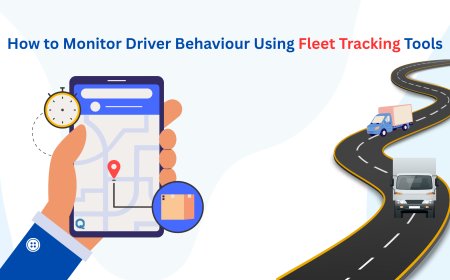Why ABA Therapy Works: The Science Behind Behavior Change and Skill Growth
Therapists analyze patterns and use data to plan interventions that increase helpful behaviors and reduce harmful or unhelpful ones.

Understanding how people with autism learn, grow, and change behavior is key to supporting their development. Applied Behavior Analysis (ABA) Therapy is one of the most researched and effective methods for helping individuals, especially children on the autism spectrum, build social, academic, and life skills. At beyond infinity aba, this science-based approach is used to guide positive changes in real-life situations, making learning meaningful and personalized.
What Is ABA Therapy?
ABA stands for Applied Behavior Analysis. It's a scientific method that studies how behavior works and how it can be changed.
This therapy uses rewards and structured techniques to teach new behaviors, reduce unwanted ones, and help individuals gain independence.
The Science Behind ABA
ABA is based on behavioral psychology. It looks at the relationship between what happens before a behavior, the behavior itself, and what follows.
Therapists analyze patterns and use data to plan interventions that increase helpful behaviors and reduce harmful or unhelpful ones.
Individualized Plans That Fit Unique Needs
Every person with autism is different, so ABA therapy is tailored to meet individual strengths and needs.
This personalized plan ensures that the learner is supported in a way that works best for them, whether thats communication, play, or daily routines.
Skill Building in Everyday Life
ABA helps children and teens learn how to communicate, take care of themselves, follow instructions, and play with others.
These are everyday skills that make a big difference in their quality of life and ability to interact with the world around them.
The Role of Reinforcement
Positive reinforcement is a key part of ABA. When a child does something well, they are rewarded to encourage the behavior again.
Over time, this helps build long-lasting habits and makes learning fun and meaningful.
Trained Therapists Make a Difference
ABA is carried out by skilled professionals known as behavior technicians and Board Certified Behavior Analysts (BCBAs).
They work closely with families to create structured environments that promote learning and emotional growth.
Tracking Progress with Data
In ABA therapy, data is collected in every session to measure how well the strategies are working.
Therapists review this data often to adjust goals and make sure the child continues to progress effectively.
Addressing Repetitive Behaviors
Children with autism often have repetitive behaviors. For example, a question that many parents ask is, _is rocking yourself to sleep a sign of autism?_
This behavior might be a way of self-soothing or a sensory need. ABA helps identify why such behaviors happen and teaches safer or more social alternatives if needed.
Teaching Communication Skills
Many children with autism have trouble expressing themselves. ABA therapy focuses on teaching communication in ways that fit each childs needs.
Whether its using words, pictures, or devices, improving communication helps reduce frustration and builds stronger relationships.
Building Social Skills Step by Step
Social interactions can be overwhelming. ABA breaks these into smaller steps so children can learn how to make friends, take turns, and join group activities.
By practicing these skills in safe environments, children grow more confident over time.
Family Involvement Is Key
Parents and caregivers are essential in the ABA process. They are trained to use ABA strategies at home, making progress faster and more consistent.
This teamwork approach creates a supportive environment 24/7, not just during therapy sessions.
Flexibility for All Ages and Abilities
Although ABA is often used for young children, it is also helpful for teens and even adults with autism.
Goals shift with ageearly learners may focus on play and language, while teens work on independence and job skills.
Proven by Research
Many scientific studies show that ABA therapy leads to significant improvements in communication, learning, and behavior.
Because it is evidence-based, insurance companies and schools often support ABA as a treatment for autism.
Creating Long-Term Positive Change
The goal of ABA is not just short-term improvementits long-term success.
Children who receive quality ABA therapy often learn how to care for themselves, interact with others, and become more independent over time.
Why Families Choose ABA
Families choose ABA because it offers hope, structure, and results. Its one of the few therapies that breaks goals into small, measurable steps.
When done with care, ABA becomes a life-changing tool for both children and their families.
Conclusion
ABA Therapy is a powerful approach backed by science, data, and compassion. It helps children with autism learn meaningful skills and reduce challenging behaviors.
With support from trained professionals and active family involvement, ABA therapy creates real, lasting change.
Thats why so many trust Beyond Infinity ABA as a partner in their journey.
In simple terms, ABA makes growth possibleone step at a time.





















![Top 11 Real Estate Mobile App Developers in Riyadh, Saudi Arabia [2025 Edition]](https://www.philadelphialivenews.com/uploads/images/202506/image_430x256_68621a9e48997.jpg)






















